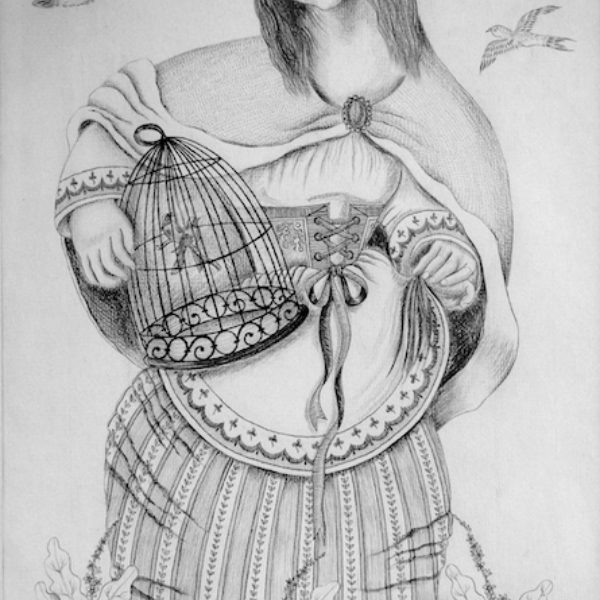
Fritzi Brod
b. 1900, Prague - d. 1952, Chicago, IL
Fritzi Schermer was born in Prague to Jewish parents. Her mother came from a family of Austrian farmers and brewers and her father was Sephardic (Spanish and Dutch). Fritzi grew up in luxury, attending private school and following in her mother’s artistic footsteps. They travelled to art and music centers all over Austria and Germany. Later the artist would be greatly influenced by European modernists, in particular, the work of Egon Schiele. As a child she saw Pavlova and her ballet, which inspired her to begin costume design and use flower embroidery. She studied at art schools in Prague and gained entrance to the competitive Kunstgewerbeschule in Vienna.
Fritzi Schermer met Oswald Brod, an American citizen who was born in Vienna, when he was in Austria buying books for the New York bookstore Brentano’s. He stayed abroad for two years before having to return to keep his citizenship. Brentano’s posted Oswald Brod in Chicago and he sent for Fritzi to join him there as his bride. By the time she arrived in Chicago in 1924, she was an accomplished textile designer, having already published 200 patterns in the German magazine Schmuckformen. Her textile designs were some of the first “modern” patterns displayed at Marshall Field’s. After a few years, she became restless and entered A. Raymond Katz’s studio, the so-called Little Gallery, and began sketching the female form, combining it with both abstract and decorative motifs. In 1936, C. J. Bulliet described how her work “equates beautiful flowers and beautiful women—of equal consequence, of identical aroma.”
Several works in the Friedman collection depict fanciful women, including Untitled (Elegy), and Untitled (Woman with birds). Untitled (Portrait of a woman) reveals Brod’s interest in embroidery in the billowing sleeves’ vivid floral design. She contributed a print, In the Workshop, to the portfolio, A Gift to Birobidjan, bringing together her interest in fashion with the common theme during the Depression of the dignity of labor. The woodcut depicts five women sewing in a crowded composition, a Vogue magazine tacked to the wall behind them.
Brod’s innovative textile designs gained her a great reputation in the American fashion world. She wrote several design books, including 200 Motifs and Design, Flowers in Nature and Design, and Decorative Design. Her work was exhibited and collected across the United States.
Lisa Meyerowitz
References
Bulliet, C. J. “Artists of Chicago: Past and Present, No. 74: Fritzi Brod,” Chicago Daily News, August 1, 1936.
Illinois Women Artists Project, http://iwa.bradley.edu/artists/FritziBrod
Oakton Community College. A Gift to Biro-Bidjan: Chicago, 1937: From Despair to New Hope. Exhibition website, http://www.oakton.edu/museum/Brod.html.
Weininger, Susan. “Fritzi Brod.” In Elizabeth Kennedy, ed. Chicago Modern, 1893–1945: Pursuit of the New, 96. Exh. cat. Chicago: Terra Foundation for the Arts, 2004.
Artist Image: Fritzi Brod / unidentified photographer. Subject to copyright.

